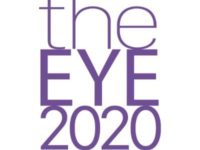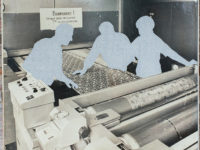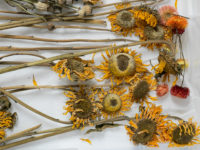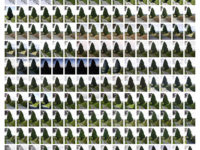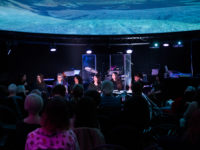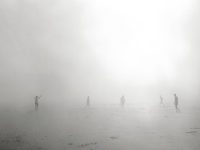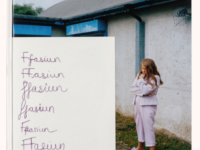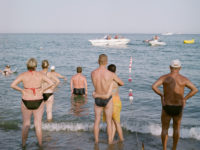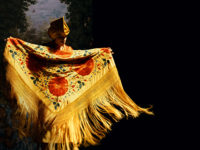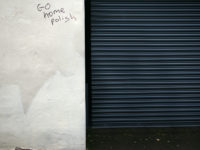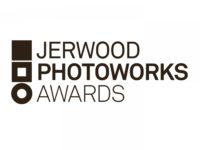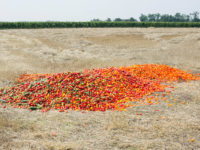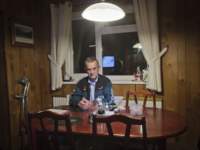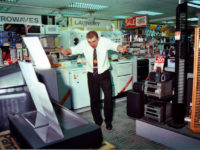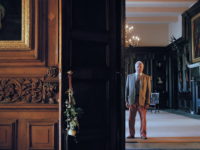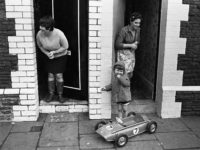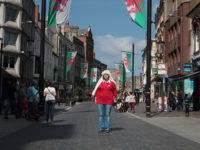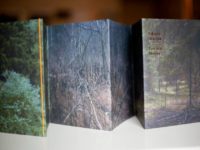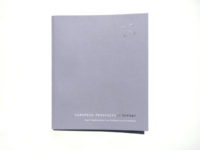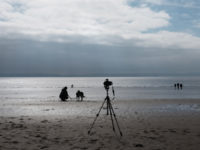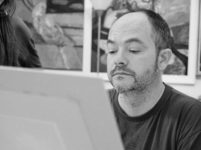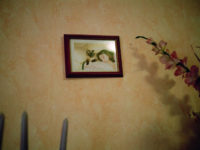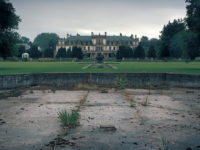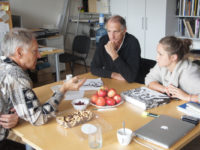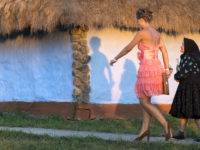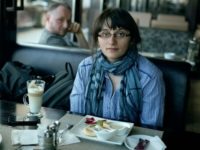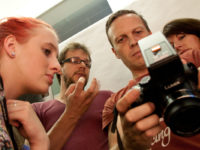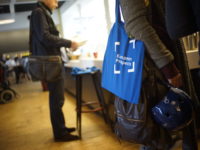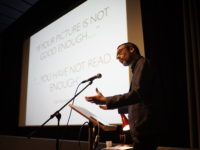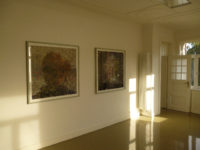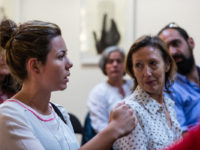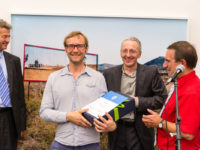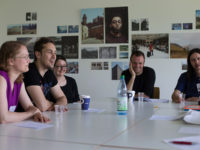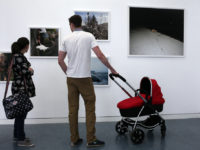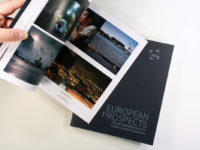Europa Re-Imagined Report
Europa Re-Imagined offered an opportunity to discuss current trends in photography and platforms for photographers to share their work. Central to the symposium was photography's role in answering the question what does it mean to be European? The symposium was not the focus, but a step in an ongoing process to create a European network. The day was about old and new friends meeting and discussing their experiences and meetings in a European community.
Malcolm Dickson from StreetLevel Photoworks and Ángel Luis González Fernández from PhotoIreland festival both discussed their separate projects in terms of a country looking outwards, to promote its photographers beyond its borders and create a European network within.
Paraphrasing Brecht, Malcolm Dickson began his talk with “Before moving forward, check the direction behind you” as a way of introducing the ecology and history of photography in Scotland. Opening in 1989, StreetLevel Photoworks has consistently offered a platform for Scottish photography, as well as a showcase for European works.
StreetLevel’s Lithuanian Photography Season presents a model for European partnership with artists and organisations abroad. In 1993 StreetLevel had a substantial exhibition of photography from the Baltic States, a relationship that has been resurrected with the season. The Lithuanian Photography Season, partnered with Kaunas photography gallery had exhibitions such as Borderlands 2 which included artists in the original show, with contemporary works from Lithuanian artists, a link between the past and present. The season fused the local with the regional – where conversations begin to seep out in terms of a European identity.
The Lithuanian season came about in 2009 after a series of incidental contacts with Kaunas Photography Festival, where Dickson was invited back to Kaunas photography festival to do portfolio reviews, after which he went to Infocus festival in Vilnius and to give a talk on Scottish photography and things happened from there.
Discussing contemporary photography in Scotland, Dickson noted that there’s currently a ground swell of energy with lots of initiatives, collectives and magazines establishing such as Document Scotland collective, Scottish photographers network and Solas magazine representing platforms for photographers to get involved and get their work seen.
StreetLevel Photoworks support emerging Scottish talents through a number of exhibitions and initiatives such as Future Proof, which supports new talents from degree shows in Scotland, the Young Photographers Alliance, a network between New York, London, Birmingham and Glasgow mixing young image makers with professionals. As well as hosting the Jill Todd Photographic Award, which gives new makers the opportunity to create a new body of work, paid for and framed, shown in an established venue.
At this years Glasgow International, Arnis Balcus will be showing at StreetLevel Photoworks. Dickson Met Balcus at Kaunas Photo Festival and a relationship developed. These meetings at events such as Kaunas, Format and Diffusion Festival are central to links criss-crossing across the place.
Ángel Luis González Fernández, the founder and director of PhotoIreland discussed the reasons and process for setting up a photography festival in Ireland. When living and studying in Ireland, Fernández discovered a photographic sensibility seen as the little brother to the fine arts, with a lack of progression in terms of MA’s, Phd’s and professorships. Fernández decided to set-up PhotoIreland as a call for more voices about photography in Ireland, hoping to create a stronger network on practitioners.
Since 2010 the festival has grown with a greater international outlook, developing a more thorough program with wider local and international networks, focusing not just on exhibitions but more on talks, workshops and the book and magazine fair. In 2011, the festival published Martin Parr’s Best Books of the Decade that quickly sold out. As it can be hard to get books in Ireland, the focus on publishing made many rare and hard to find photography books accessible to the public. The Library Project grew out of the publishing events, creating an expanding archive of photography books.
In 2013 the festival went across Ireland, visiting Cork and Limerick to work with other networks outside of Dublin. PhotoIreland explored the variety of work being made across the country and published a book New Irish Works giving artists the chance to show works internationally. New Irish Works made the project more expansive, looking past the hub of Dublin.
PhotoIreland is not just a festival, but an organisation promoting photography all across Ireland and abroad, through exhibitions, events and the library project. The focus is not for the festival to becomes massive, but how they can help form a local network, to connect with international, help different organisations in Ireland.
Marc Prust, an independent photography curator and consultant took a different angle, looking at new viable strategies for European photographers.
Beginning with the provocation "Who attends festivals? Or portfolio reviews?" Is it only a small community? And is there enough time for a connection? Prust looked at alternative ways to get your work seen, If you have a story to tell through the medium of photography, you can take matter into your own hands and take control. The Internet and social media allow you to find and connect to a dedicated audience and build your own community. Through this strategy you can reach out directly to your fan base and connect, you are not dependant on magazines, galleries, and museums.
If you know your story, and can identity who might be interested, you can go out and build a direct connection, not because of photography, but because they are interested in what you have to say. Prust noted that 1,000 fans Is all you need, it is manageable on a human level, with a critical mass large enough for interest, but small enough to manage. The key is to identify who could be interested and how can you reach out and connect to them. The crowd is not a bag of money, bring them closer to the project, exchange and build a relationship.
Some examples of how this can work include:
http://everydayafrica.tumblr.com/ – 50 photographers living and working in Africa who post daily pictures, there are already 62000 followers who are interested because they are telling interesting lively stories.
Jeroen Toirkens- Nomad – now in its 2nd edition, the project was not successful within photo community but popular with people interested in mountaineering, travel, exploring. People were interested in the stories, and often were involved and felt part of the project.
Prust’s message was to know your story, find your own audience, and build your own relationships by yourself. If you look past the professional photographic community, you can find a wider audience who will be interested in your work.
The afternoon session saw the group spilt into 3 groups to discuss the questions Too many artists, too few opportunities? Who decides what is good work? How to make friends and influence people?
Too many artists too few opps?
The condition of opportunities was discussed, in terms of cost, especially for young emerging photographers. There was a contention between the types of opportunities offered and the creative outcome, which should be practice led, not outcome based. The independence of practice may depend where the funding comes from, which could compromise the artists practice.
There was a call for mentor programs, funded residencies and information sharing which could lead to longer term engagement, support and commitment to an artists practice, leading to a better understanding and a broader network.
With some opportunities such as portfolio reviews, it was suggested that there is a process of filtering so artists and curators would only see the relevant people who would be interested in the work and form a longer collaborative relationship. Instead of speed dating, the process could become fine-tuned and lead to a more serious meaningful interaction.
Who decides what is good work?
Debates focused on the idea of success, is it the process of making work? Selling? Development of institutions or gallery recognition? Social media - Is this superficial recognition? We cannot all agree on what is success for an artist.
For an institution, is there too much of a focus on numbers and monitoring? An attempt to justify a program for the funders, audiences, and artists?
Is success simply to survive? As an artist or institution? Or if everyone is satisfied within the system – the audience, artists and institutions, is this success?
Questions about selling work were raised, as well as the value of photography as a reproducible medium; does this affect its value?
It was argued that investments in artists should match the investment in business, which is expected to see a tangible return. Artists often work for free and invest in their career with no guarantees, could we adopt the tools in other businesses?
If not money, what other modes of exchange are there?
How to make friends and influence people?
The ideas of networks were discussed and which events were popular.
It was decided that the most popular festivals had a feeling of intimacy and community, giving people a reason to go there.
There isn’t one way for successful networking– some use online successfully but face-to-face meetings are vital in forming relationships. The keys to successful networking were the ideas of serendipity - whom you meet and what comes out of it and the ensuing ricochet – the knock on effects.
Networks should not be closed but open, looking outside to other audiences, finding these connection points beyond your own scene.
The Europa Re-Imagined symposium created a space for photographic professionals, artists and organisations to meet up and form new potential networks. Asking questions about the possibility of a European network, Europa Re-Imagined created the space for people to meet, and continue conversations which could lead to potential partnerships.
Report by Rory Duckhouse

